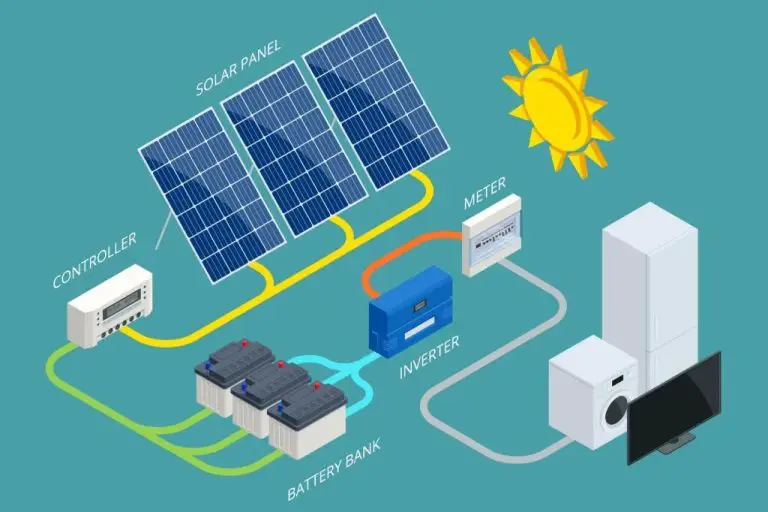Is Solar Energy The Future Of The Earth?

As the world seeks affordable, renewable energy sources to tackle climate change and reduce emissions, solar energy has emerged as a promising option. Solar energy utilizes sunlight and photovoltaic panels to generate electricity and heat, producing no greenhouse gases in operation. While solar currently provides only around 3% of global electricity, some experts predict it could generate over 20% by 2050.
This article examines the potential of solar energy to become a dominant energy source for the planet in the coming decades. While solar has many benefits like decreasing costs and rapidly improving efficiency, it also still faces limitations like intermittency and storage. Understanding solar’s current uses, future potential, and remaining challenges will provide insight into whether solar can truly become the future of Earth’s energy.
History of Solar Energy
Solar panels were first invented in 1839 by French physicist Edmond Becquerel. He discovered the photovoltaic effect while experimenting with metal electrodes and electrolyte solutions. However, it was not until 1883 that the first solar panels for commercial use were created by American inventor Charles Fritts. He coated selenium cells with an extremely thin layer of gold to produce the first commercial solar cells. Fritts’ solar panels had only about 1% efficiency but proved that the technology could generate electricity from sunlight.
In the early 1900s, Albert Einstein published papers explaining the photoelectric effect, for which he later won the Nobel Prize in Physics in 1921. This furthered the theoretical understanding of converting sunlight into electricity.
The first modern silicon solar cell was invented in 1954 at Bell Laboratories. The New York Times called it “the beginning of a new era, leading eventually to the realization of one of mankind’s most cherished dreams – the harnessing of the almost limitless energy of the sun for the uses of civilization.” https://www.smithsonianmag.com/sponsored/brief-history-solar-panels-180972006/
Through the 1950s and 1960s, solar technology continued improving. The space industry pushed development forward, using solar panels to power spacecrafts. But it was still too expensive for widespread commercial use on Earth. That started to change in the 1970s, as oil embargoes led to spikes in energy prices. Federal tax credits helped the solar industry grow, especially in California. And solar panels became more efficient and affordable thanks to advanced materials and manufacturing techniques.
Solar Energy Basics
Solar panels work by allowing photons, or particles of light, to knock electrons free from atoms, generating a flow of electricity. Solar cells inside the panels contain important layers that help with this process.
The most important layer, called the p-n junction, contains the positively-charged (p) and negatively-charged (n) silicon. The photons smash into the atoms, knocking electrons free. Because of the panel’s special construction, the electrons can only flow in one direction, creating an electric current.
Solar panels also contain metal conductive plates on the sides to collect the electrons and wires to transport the current. Ultimately, this electricity is either fed into the power grid or stored in a battery (National Grid, 2023). https://www.nationalgrid.com/stories/energy-explained/how-does-solar-power-work
Current Use of Solar
In 2021, solar energy accounted for approximately 3.4% of total U.S. electricity generation according to EIA. This was split between photovoltaic solar at 3.3% and solar thermal at 0.1%. Total solar generation was 144 billion kilowatt hours. While solar is still a relatively small percentage of total generation, it has been growing rapidly over the past decade. According to the U of Michigan, wind and solar are the fastest growing renewable energy sources, even though they only accounted for 6% of total U.S. energy consumption. Clearly solar has significant room for continued growth and expansion as a power source.
Benefits of Solar
Solar energy has several important benefits that make it an attractive renewable energy source (https://www.energy.gov/energysaver/benefits-residential-solar-electricity). First, solar energy is clean and renewable. Solar panels produce electricity without emitting greenhouse gases or other pollutants. This makes solar a sustainable energy source that does not contribute to climate change or air pollution (https://www.enelgreenpower.com/learning-hub/renewable-energies/solar-energy/advantages-solar-energy).
Second, solar energy reduces dependence on fossil fuels. Widespread adoption of solar power can decrease the amount of electricity generated from coal, natural gas, and other non-renewable sources. Relying more on the sun for energy needs helps conserve finite fossil fuel reserves and improves energy security by diversifying the energy supply.
Finally, solar energy relies on the sun, which will continue shining indefinitely. This makes solar a sustainable long-term energy solution. Once solar panels are installed, they can generate emissions-free electricity for decades with minimal maintenance needed.
Limitations of Solar
While solar energy has many benefits, there are some limitations to consider as well. Two of the biggest limitations are intermittent power and high upfront costs.
Solar energy relies on sunlight to generate electricity. This means solar panels do not produce electricity at night or on cloudy days, leading to intermittent power. Homes and businesses with solar panels need a connection to the utility grid for consistent power when solar generation is low (Constellation).
Additionally, installing solar panel systems can be expensive upfront. While solar panels have gotten cheaper over time, the cost to purchase and install a system ranges from $15,000-$25,000 for the average home. This high upfront investment can deter some homeowners and businesses from adopting solar energy (Constellation).
Despite these limitations, advances in energy storage technology and financial incentives are helping to improve solar energy’s cost-competitiveness over time. However, intermittent power and high upfront costs remain key challenges facing broader solar adoption currently.
Improving Efficiency
There have been major advancements in solar cell technology in recent years that have significantly improved the efficiency of solar panels. Some cutting-edge technologies include:
Perovskite solar cells, which are made of inexpensive materials and can reach efficiencies over 25%. Perovskite cells can be layered on top of silicon cells to create more efficient tandem solar cells [1].
Organic solar cells that use carbon-based materials are lightweight and flexible. While less efficient than silicon, they can be made into solar cladding for buildings [2].
Quantum dot solar cells that use nanotechnology to absorb a broader spectrum of light. Combined with silicon, quantum dots can boost efficiency above 40% [3].
Batteries and energy storage solutions are also advancing to store solar energy for use when the sun isn’t shining. Lithium-ion batteries, flow batteries, and hydrogen storage are becoming more affordable and efficient.
Potential Scale
Solar energy currently accounts for about 3% of total electricity generation globally, but studies show its share could grow substantially in the coming decades with the right policies and continued cost reductions. According to the International Energy Agency (IEA), solar power could reach over 25% of global electricity generation by 2050 in an optimistic scenario (NREL). Other analyses envision solar supplying 20-25% of total global energy demand by 2050 (MIT).
The potential for growth exists because solar resources are abundant – enough sunlight strikes the Earth in 1 hour to power human civilization for 1 year (Arka360). However, there are still challenges to overcome in deploying solar at such large scales, including the variability of solar power, land usage constraints, and the need for storage to provide electricity when the sun isn’t shining. With continued policies that account for these challenges, solar appears poised to become a major pillar of the global energy system this century.
Policies and Incentives
Various government programs have been established to encourage the adoption of solar energy. At the federal level, there is an investment tax credit (ITC) that allows homeowners to deduct 26% of the cost of installing a solar energy system from their federal taxes in 2020-2021. The ITC will increase to 30% in 2022 and beyond (Homeowner’s Guide to the Federal Tax Credit for Solar). The ITC applies to both residential and commercial solar installations. There are also state and local incentives like rebates or tax credits available in many areas of the country, with the specific policies varying widely (Solar Tax Credit By State 2024). Government incentives aim to offset the upfront costs of solar adoption and accelerate the transition to renewable energy.
Conclusion
In conclusion, solar energy shows great promise as a renewable, clean energy source that could play a major role in powering the world. The potential scale of solar is massive, with enough energy from the sun striking the Earth in one hour to provide a year’s worth of energy for the entire planet. While costs have dropped dramatically, solar still faces challenges around efficiency, storage, and scaling up manufacturing and infrastructure before it can become a primary source of energy.
With continued technological improvements and supportive policies, solar energy could realistically provide 20-50% of global electricity by 2050. But it is unlikely to fully replace other energy sources like fossil fuels anytime soon given the massive scale required. Solar works best when integrated into the grid alongside other renewables and conventional sources.
The future is bright for solar, but it requires patience as well as optimism. With consistent research, development, and deployment, solar can gradually shift more of our energy portfolio to this limitless, clean fuel source and help mitigate climate change in the process.







